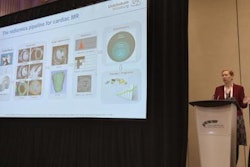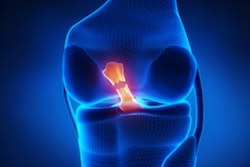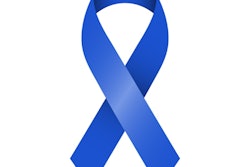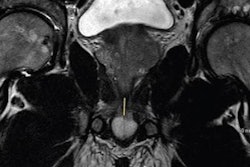
An MRI radiomics-based nomogram can outperform radiologists in predicting complete pathological response to neoadjuvant chemotherapy in locally advanced rectal cancer, a Chinese study published February 2 in Academic Radiology found.
Researchers led by Dr. Lu Wen from Central South University in Changsha, Hunan, found that their nomogram based on radiomics features on pre-therapy and post-therapy MRI exams achieved a significantly higher area under the curve (AUC) than that of single and pooled readers.
"MRI-based radiomic models may provide a noninvasive and convenient method to guide treatment planning in patients with locally advanced rectal cancer after they have undergone chemoradiotherapy," Wen and colleagues wrote.
Neoadjuvant chemotherapy is the standard treatment method for treating rectal cancer. However, its performance varies, with previous reports suggesting that 15% to 27% of locally advanced rectal cancer patients achieve complete pathological response.
Previous studies have explored MRI's potential for predicting treatment response, but they have had variable results. However, the researchers in those studies suggested that radiomics could further help with decision-making by reflecting tumor heterogeneity and biological characteristics of tumors, according to Wen and colleagues.
In their study, the authors wanted to find out what would happen if they combined MRI radiomics data and clinical factors into a model to noninvasively identify patients who may not need surgery.
They first used 250 radiomic features from T2-weighted images gathered from pre- and post-chemotherapy MRI to construct several different radiomics models. They also performed correlation analysis and identified radiomic descriptors linked to complete pathologic response. Individual radiomic models were constructed by five machine-learning classifiers, and multivariate logistic regression analysis was then used to integrate the radiomics scores and clinical variables into the final radiomics nomogram.
The team developed the models and radiomics nomogram using MRI and clinical data from 126 patients with locally advanced rectal cancer and who had received neoadjuvant chemotherapy before surgery. The patients were randomly divided into training (n = 84) and validation (n = 42) sets.
The nomogram outperformed the single radiomics models, as well as two radiologists with 10 to 15 years of experience, respectively.
| Performance of radiomics nomogram vs. radiologists for predicting pathologic complete response | ||||
| Reader 1 | Reader 2 | Pooled reading | Radiomic nomogram (validation set) | |
| AUC | 0.606 | 0.621 | 0.614 | 0.852 |
Meanwhile, the single models based on pre-treatment radiomics score, post-treatment radiomics score, and a delta radscore (changes in radiomics between the pre-treatment and post-treatment MRI) yielded AUCs on the validation dataset of 0.717, 0.805, and 0.724, respectively.
The study authors suggested that their nomogram yielded high performance metrics due to the advantages of using MRI radiomics, including providing in-depth characterization of tumor heterogeneity not seen by human eyes.
"We may expect that the radiomic model can be used to assist radiologists' qualitative observation and reduce inter-reader variation," they wrote.



















